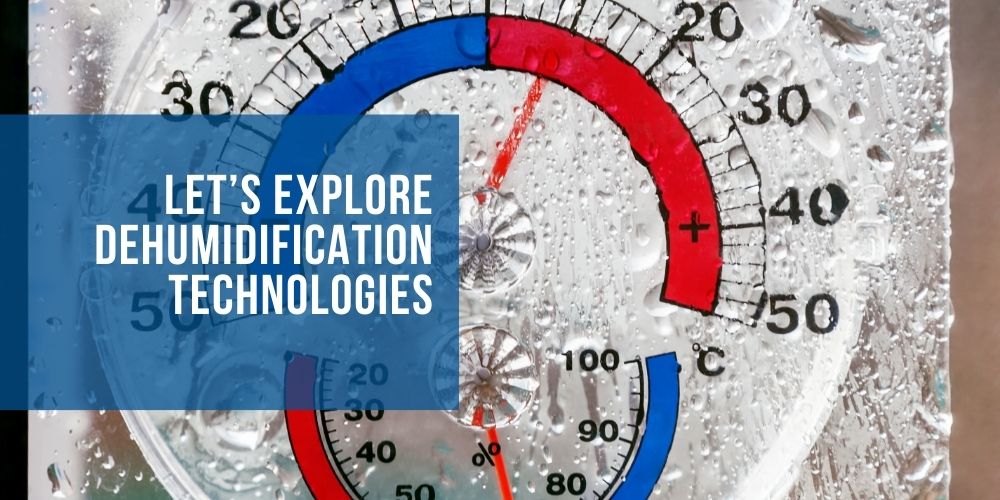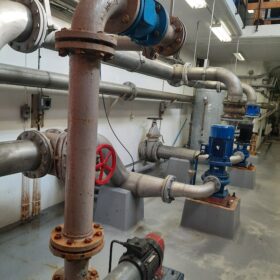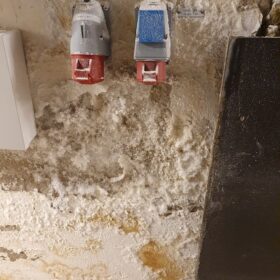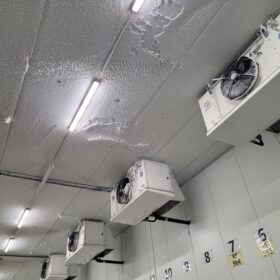Excess humidity can lead to condensation, corrosion, mold growth, and ice formation—causing costly damage in industrial environments, logistics hubs, and different types of buildings. But which dehumidification technology is the best fit for your needs? This article breaks down the most common methods and their pros and cons, helping you make an informed decision.
The importance of dehumidification
Moisture control is essential for various industries to:
- Prevent condensation, corrosion and water-related damage
- Protect machinery, products, and infrastructure from corrosion
- Maintain stable climate conditions in warehouses and storage facilities
- Reduce energy costs by improving efficiency in temperature-controlled environments
- Ensure a safe working environment by mitigating risks such as slippery surfaces and poor air quality
Each of these objectives highlights the importance of having a reliable and effective dehumidification system in place. By addressing these challenges, businesses can minimize risks, improve productivity, and save on operational costs.
Overview of common dehumidification technologies
There are several types of dehumidification technologies, each designed to tackle specific moisture-related challenges. Let’s explore their features, benefits, and limitations to help you make an informed decision. Each technology has its place depending on the climate, facility type, and specific moisture challenges.
- Condensation (refrigerant-based) dehumidifiers – Effective in warm environments
- Desiccant (adsorption) dehumidifiers – Ideal for cold conditions and extreme moisture control
- CVP technology – Airwatergreen’s solution
1. Condensation (refrigerant) dehumidifiers – for warm environments
How it works? Condensation dehumidifiers use a cooling coil to lower air temperature. As the air cools, moisture condenses and is collected as water. The dry air is then reheated and recirculated.
However the condensation dehumidifiers are limited in their effectiveness, as they only perform well in warm environments above 10°C. In lower temperatures, the cooling coil may freeze, significantly reducing efficiency. Additionally, these systems are not ideal for industrial settings with heavy moisture loads and a need for really dry air, due to limitations in the technology.
2. Desiccant (adsorption) dehumidifiers – High performance in cold conditions
How it works? Desiccant dehumidifiers use a moisture-absorbing material (such as silica gel) to extract humidity from the air. The moisture is then removed through a heating process.
A few advantages:
- Works efficiently in cold environments that makes it ideal for refrigerated warehouses, logistics, and industrial storage
- Removes moisture even at low humidity levels
If unlike condensation-based systems, there is no risk of coil freezing, it requires heat to remove moisture from the desiccant (meaning higher energy consumption). This technology can be expensive to install and to operate continuously.
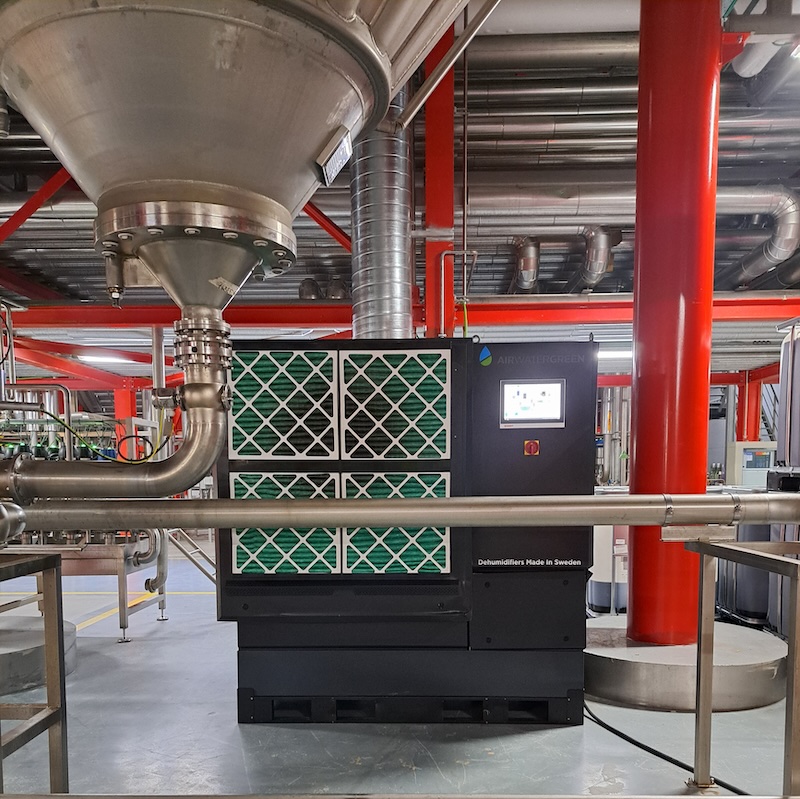
3. CVP technology – Airwatergreen’s approach to dehumidification
Airwatergreen’s Control Vapor Pressure (CVP) technology used in the NEXT Series is a patented version of dessicant technology offers a high-performance and energy-efficient approach to dehumidification eliminating a number of major drawbacks.
Why this innovative technology in NEXT stands out today:
- Works efficiently in both warm and cold environments – No performance loss at low temperatures
- Uses 30-70% less energy than traditional systems
- Plug-and-play installation – Easy to do a test installation and to integrate into any facility
- Build with standard components – Lower maintenance costs
NEXT is designed to provide reliable, cost-effective humidity control for logistics, food production, water industry and any industrial facilities.
So, which dehumidification technology is right for you?
- Condensation dehumidifiers are effective in warm environments but struggle in colder conditions and where there is a need for lower humidity levels, where their performance significantly drops.
- Desiccant dehumidifiers excel in controlling extreme moisture levels but tend to consume more energy are often more expensive to install and maintain.
That’s why NEXT stands out as the most efficient, adaptable, and cost-effective solution for managing humidity challenges across a variety of environments.
Want to learn how NEXT can address your specific humidity control needs?

